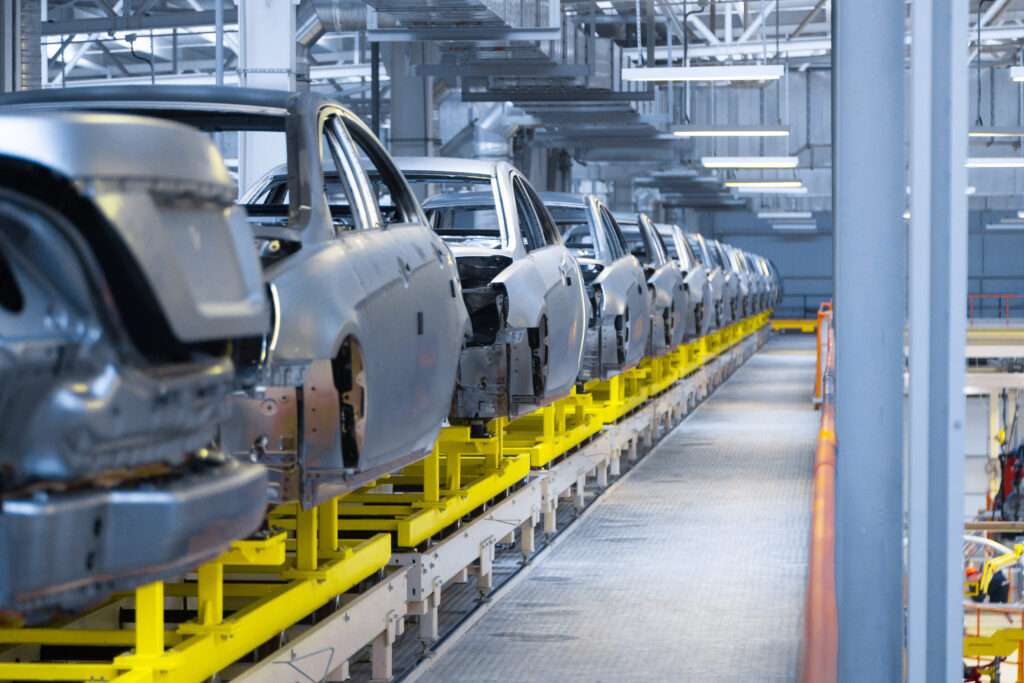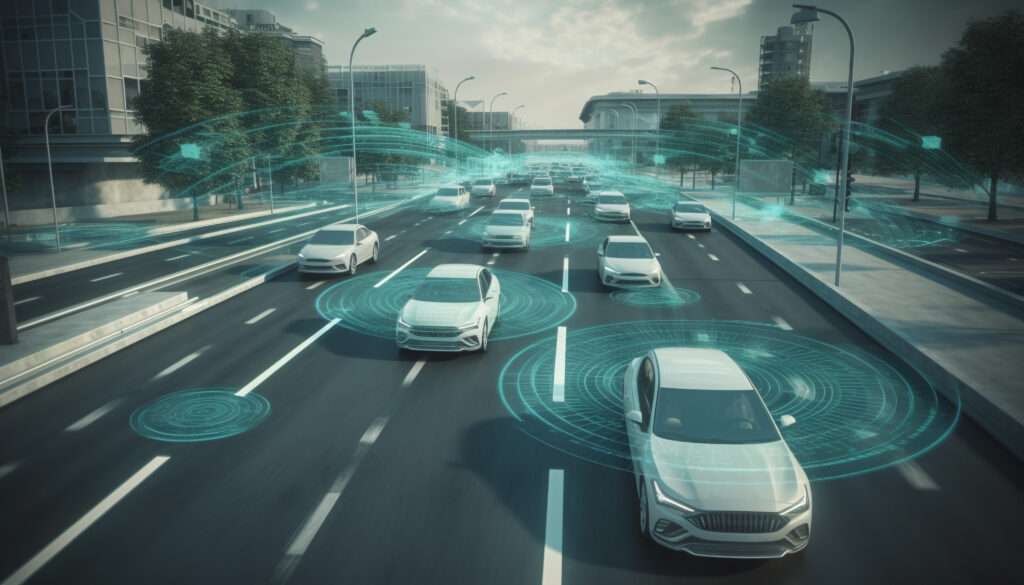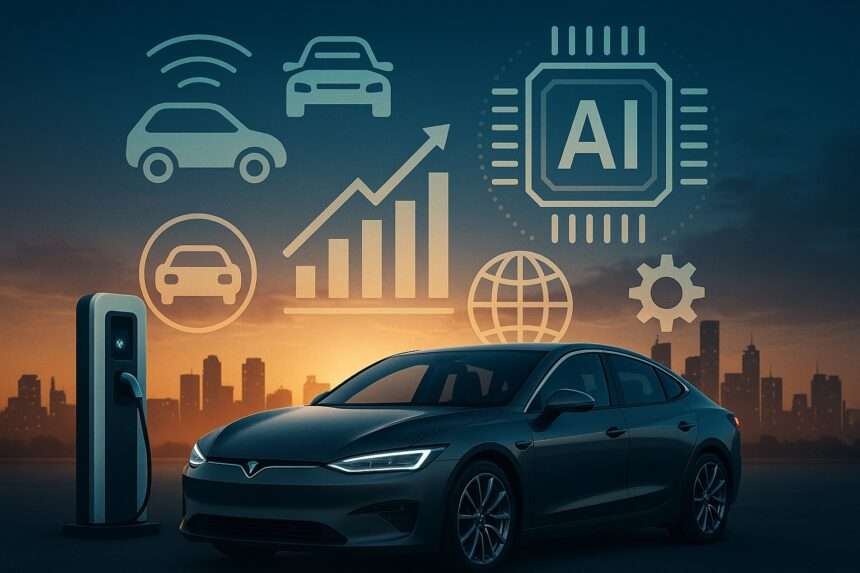Global mobility is changing fast. This guide explains where demand is rising, how electrification and software are reshaping value, and the operational and policy headwinds automakers must navigate.

The auto industry in 2025 is experiencing one of its most significant shifts in decades. The combined forces of technological innovation, shifting consumer demands, environmental regulation, and geopolitical pressure are reshaping how vehicles are designed, manufactured, financed, and used. Global vehicle sales are climbing after the post-pandemic slump, but what a “car” is—and what it means to own one—is evolving quickly. This year represents a balancing act for automakers: capitalize on auto industry growth while navigating the risks of rapid change.
Market Growth: Where Demand Is Coming From
Most analysts expect the auto industry to sustain modest growth in 2025, with sharp differences by region. Asia-Pacific leads, with China dominating EV sales and India expanding affordable segments. North America continues to favor SUVs and trucks while experimenting with electric pickups. Europe’s strict emissions rules and incentives are accelerating EV adoption. In Latin America and parts of Africa, entry-level vehicles are gaining as middle classes grow. Subsidies for cleaner cars, stronger charging networks, and normalized parts supply are the main tailwinds for the auto industry this year.

Electrification at Scale
Electrification is the most visible transformation in the auto industry. EVs are on pace to approach a fifth of global sales, supported by falling battery costs, a broader model mix, and policy support. Solid-state programs are moving from prototype to pre-production, and pack integration is improving range and charging times. The result is more competitive total cost of ownership versus internal combustion across increasingly diverse vehicle classes.
Cars Become Software Platforms
In 2025, a car is no longer just a mode of transport; it’s a connected, software-defined device. Over-the-air updates, predictive maintenance, and rich infotainment are standard in many segments. Automakers now treat vehicles as digital ecosystems, opening recurring revenue beyond the initial sale. That shift changes cost structures across the auto industry, with engineering organizations hiring more software and security talent and building new data capabilities.
Autonomous & Assisted Driving
Fully driverless services remain limited pilots, but advanced driver-assistance systems are mainstream. Adaptive cruise, lane keeping, and automated parking are widely available, and premium vehicles are layering in supervised highway automation. Regulators are pressing for stronger validation and clearer consumer communication, keeping safety at the center of the auto industry narrative.

Sustainability & Manufacturing Innovation
Environmental pressure is pushing the auto industry to rethink production. Factories are adopting renewable energy, vehicle designs are using more recycled materials, and lightweight components reduce lifetime energy use. Circular strategies—recycling end-of-life vehicles and repurposing batteries—are moving from pilots to playbooks. The result is both compliance and cost advantages when raw materials are volatile.
What Buyers Want in 2025
Today’s shoppers prioritize efficiency, safety, and connectivity. Surveys show a strong tilt toward EV range or fuel economy, and many buyers expect advanced safety features even in mid-range models. Younger, urban drivers are testing subscriptions and shared mobility, altering the demand mix the auto industry serves. Transparent pricing, clear charging info, and easy software updates are now baseline expectations.
Challenges Holding the Industry Back
Supply chain: Chips are improving, but new bottlenecks—lithium, cobalt, and rare earth elements—affect EV economics. Charging gaps: Rural and developing regions need denser, faster infrastructure. Regulatory complexity: A patchwork of safety, emissions, and trade rules slows launches. Competition: Startups and tech-led entrants are pressuring incumbents with fresh designs and digital experiences. These factors make execution the main differentiator in the auto industry.
Regional Snapshots
China remains the world’s largest EV market, with domestic brands exporting aggressively. The United States still favors pickups and SUVs while electrifying high-margin trims. Europe’s low-emission zones accelerate adoption of EVs and plug-in hybrids. India leans on compact cars and two-wheelers with steady EV growth. In parts of Africa, urbanization is driving demand for affordable, durable vehicles—an important frontier for the auto industry.
Business Model Shifts
Subscriptions that bundle insurance and maintenance are expanding beyond pilots. Direct-to-consumer sales models pioneered in EVs are informing legacy brands. Fleet electrification is accelerating in delivery and municipal segments, creating new partnerships and charging requirements. These shifts are changing where margin is made across the auto industry, from the factory floor to software services.
Partnerships & M&A
Strategic alliances are speeding innovation: battery joint ventures, shared EV platforms, and chip partnerships for autonomy. Suppliers of AI hardware and software are moving closer to automakers, and cross-industry deals are common. The winners in the auto industry build flexible supply chains and share R&D where it brings scale without diluting brand.
Outlook to 2030
By 2030, many markets plan to limit new combustion sales, making EVs the default in large hubs. Autonomy is likely to expand in geo-fenced city routes, and mobility-as-a-service could reduce private ownership in dense areas. Vehicles will increasingly interact with smart-city systems to optimize traffic and energy. Carbon-neutral manufacturing targets will push the auto industry toward renewables and high-value recycling.
Internal Resources on Bulktrends
- EV Home Charging Guide: Costs, Speeds & Setup
- Fuel-Efficient Driving: 21 Habits That Save Money
- Essential Car Maintenance Checklist
Authoritative Sources (External)
- OICA — Global Vehicle Sales & Production
- IEA — Global EV Outlook
- McKinsey — Automotive & Assembly Insights
Bottom line: execution beats slogans. The auto industry is growing, but the real winners combine great manufacturing with great software and infrastructure partnerships.





